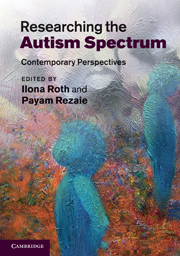Book contents
- Frontmatter
- Contents
- Preface
- Foreword
- List of Contributors
- Introduction
- Part I Classification and Diagnosis
- Part II Genetics, Neurology and Biochemistry
- 2 Unravelling the genetics of autism spectrum disorders
- 3 Brain imaging and the neuroanatomical correlates of autism
- 4 Magnetoencephalography (MEG) as a tool to investigate the neurophysiology of autism
- 5 Autism and epilepsy
- 6 Biochemistry of autism: changes in serotonin, reelin and oxytocin
- Part III Cognition, Development and Education
- Index
- Plate section
- References
4 - Magnetoencephalography (MEG) as a tool to investigate the neurophysiology of autism
Published online by Cambridge University Press: 04 February 2011
- Frontmatter
- Contents
- Preface
- Foreword
- List of Contributors
- Introduction
- Part I Classification and Diagnosis
- Part II Genetics, Neurology and Biochemistry
- 2 Unravelling the genetics of autism spectrum disorders
- 3 Brain imaging and the neuroanatomical correlates of autism
- 4 Magnetoencephalography (MEG) as a tool to investigate the neurophysiology of autism
- 5 Autism and epilepsy
- 6 Biochemistry of autism: changes in serotonin, reelin and oxytocin
- Part III Cognition, Development and Education
- Index
- Plate section
- References
Summary
This chapter introduces a modern functional neuroimaging method, magnetoencephalography (MEG), and addresses how this technique is being applied to study dynamic brain activity and neural processing in autism. An outline will be given of relevant technical and analytical approaches, before discussing functional systems and presenting important findings associated with autism, using MEG. The focus is directed at aspects of neural processing that are affected in individuals on the autism spectrum, including auditory processing, semantic processing, face processing and theory-of-mind (progressed through study of imitation-related processes linked to activity within the ‘mirror neuron’ system). While MEG is a relatively new tool, the studies available to date lend some support to the notion that autism involves altered cognitive strategies as opposed to cognitive impairments or deficits. In addition, the research on this subject is reviewed, which suggests that MEG may help define and further characterise subclinical epilepsy and epileptiform activity (seizures) in individuals with autism spectrum disorders.
Instrumentation and measurements
Magnetoencephalography (MEG) is one of a range of functional neuroimaging methods that may be applied to the study of autism. It is of interest because it allows changes in activity to be followed dynamically with millisecond resolution, and thus provides direct information on the evolution of processing along neural pathways.
By far the most common method of imaging brain activity is functional magnetic resonance imaging (fMRI).
- Type
- Chapter
- Information
- Researching the Autism SpectrumContemporary Perspectives, pp. 156 - 175Publisher: Cambridge University PressPrint publication year: 2011



